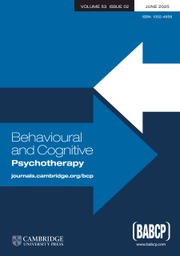Article contents
The roles of intolerance of uncertainty, anxiety sensitivity and distress tolerance in hoarding disorder compared with OCD and healthy controls
Published online by Cambridge University Press: 18 March 2022
Abstract
It is suggested that the different psychological vulnerability factors of intolerance of uncertainty (IU), anxiety sensitivity (AS) and distress tolerance (DT) may be in important in hoarding disorder (HD). However, the extent to which these factors are specific to HD compared with other disorders remains unclear.
The current study aimed to investigate differences in IU, AS and DT in three groups: HD (n=66), obsessive compulsive disorder (OCD; n=59) and healthy controls (HCs; n=63).
Participants completed an online battery of standardised self-report measures to establish the independent variable of group membership (HD, OCD and HC) and the dependent variables (IU, AS and DT).
A MANOVA analysis indicated statistically significant differences in IU, AS and DT between the clinical groups and HCs. Follow-up analyses showed no statistically significant differences between the HD and OCD group for any of the three constructs. The results remained the same when examining the effects of co-morbid HD and OCD. An unexpected finding was the trend for IU, AS and DT to be more severe when HD and OCD were co-morbid.
The evidence suggests the absence of a specific relationship between IU, AS or DT in HD and instead is consistent with existing research which suggests that these psychological vulnerability factors are transdiagnostic constructs across anxiety disorders. The implications of the findings are discussed.
Keywords
Information
- Type
- Main
- Information
- Copyright
- © The Author(s), 2022. Published by Cambridge University Press on behalf of the British Association for Behavioural and Cognitive Psychotherapies
- 4
- Cited by


Comments
No Comments have been published for this article.